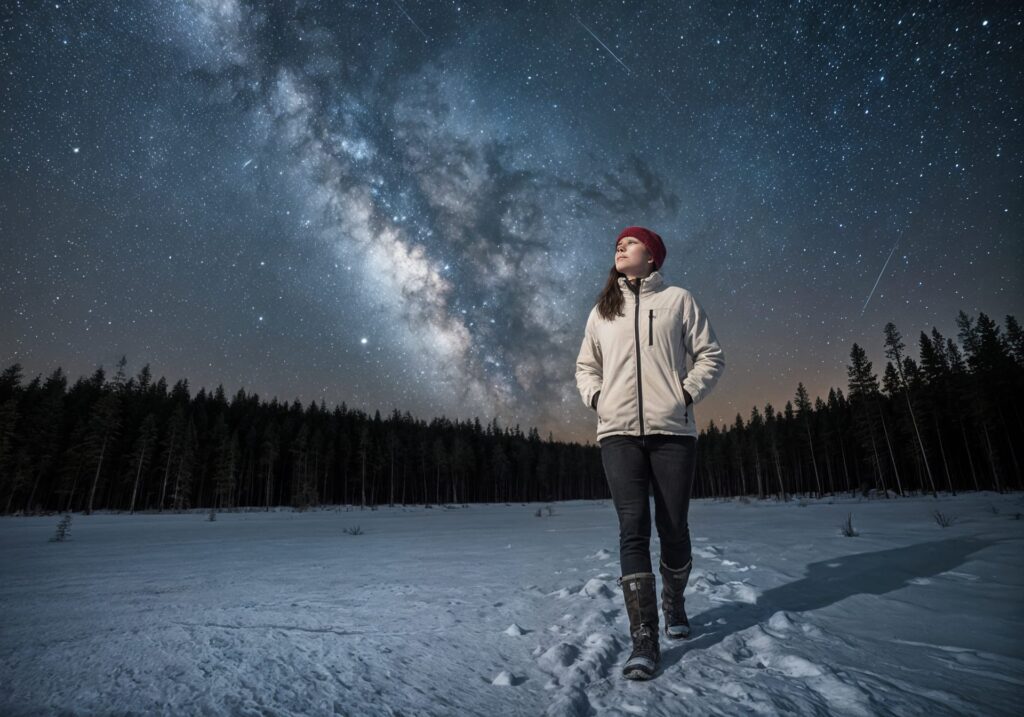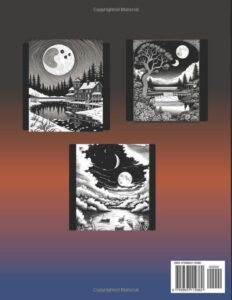In our light-polluted world, we’ve largely forgotten the profound healing power that darkness holds. While most wellness conversations focus on sunshine and daylight activities, there’s a growing body of evidence suggesting that some of nature’s most therapeutic experiences happen after the sun goes down. From stargazing to moonlit forest walks, “dark nature” activities offer unique mental health benefits that their daytime counterparts simply cannot replicate.

The Science Behind Dark Nature Therapy
When we immerse ourselves in natural darkness, our brains undergo fascinating neurochemical changes. The absence of artificial light triggers increased melatonin production, which doesn’t just regulate sleep—it also acts as a powerful antioxidant that protects neural pathways and reduces inflammation in the brain. This natural hormone cascade creates an ideal environment for stress reduction and mental restoration.
Research from environmental psychology shows that nighttime nature experiences activate what scientists call the “awe response” more intensely than daytime activities. Dr. Dacher Keltner’s work at UC Berkeley demonstrates that awe—that overwhelming sense of wonder we feel when confronted with something vast and beautiful—literally rewires our neural networks, reducing activity in the default mode network associated with rumination and self-critical thinking.
The darkness itself plays a crucial role. When our visual cortex receives less stimulation, other sensory systems become heightened. This sensory shift forces us into the present moment, naturally interrupting the anxiety-inducing thought loops that often plague our daylight hours. The result is a form of involuntary mindfulness that’s both accessible and profoundly effective.
Stargazing: Cosmic Perspective Therapy
Perhaps no dark nature activity offers more immediate mental health benefits than stargazing. When we crane our necks skyward on a clear night, we’re not just observing distant suns—we’re actively engaging in what psychologists call “perspective-taking therapy.”
The sheer scale of the cosmos has a remarkable ability to shrink our problems down to size. That work deadline that’s been keeping you awake suddenly seems less overwhelming when you’re contemplating the 2.5 million-year journey of light from the Andromeda Galaxy. This isn’t escapism; it’s a healthy recalibration of our place in the universe that can dramatically reduce anxiety and depression symptoms.
Stargazing also engages what researchers call “soft fascination”—a gentle, effortless attention that allows our minds to rest and restore. Unlike the “hard fascination” required by screens and urban environments, which depletes our cognitive resources, the slowly shifting patterns of stars and planets provide mental stimulation without exhaustion.
The practice encourages deep breathing as we naturally sync our respiratory rhythm with the vast, unhurried movements of celestial bodies. This unconscious breathwork activates the parasympathetic nervous system, lowering cortisol levels and heart rate while promoting feelings of calm and connectedness.
Moonlit Adventures: Nature's Nightlight
Walking or hiking by moonlight offers a completely different therapeutic experience than daytime excursions. The silvery illumination creates a dreamlike landscape that engages our imagination while simultaneously grounding us in physical reality. This unique combination has proven particularly effective for individuals dealing with creative blocks, mild depression, and chronic stress.
The reduced visibility inherent in moonlit activities forces us to slow down and engage more mindfully with our environment. We become acutely aware of the crunch of leaves underfoot, the whisper of wind through branches, and the subtle sounds of nocturnal wildlife. This heightened sensory awareness pulls us out of our heads and into our bodies, providing immediate relief from the mental chatter that often characterizes anxiety disorders.
Moonlight hiking also offers what environmental psychologists call “positive stress” or eustress. The mild challenge of navigating less familiar terrain in limited light provides just enough stimulation to release endorphins and build confidence, without triggering the fight-or-flight response associated with harmful stress.
The Night Soundscape: Audio Therapy in Darkness
One of the most underappreciated aspects of dark nature experiences is the radically different soundscape that emerges after sunset. The daytime cacophony of human activity gives way to what acoustic ecologists call the “natural soundscape”—a complex symphony of cricket choruses, owl calls, rustling leaves, and distant water movement.
These natural sounds have measurable therapeutic effects. Studies using EEG technology show that exposure to natural nighttime audio patterns can shift brainwave activity from the high-stress beta frequencies toward the more relaxed alpha and theta states associated with meditation and deep relaxation. The irregular, organic rhythms of night sounds help reset our nervous systems, which have become overstimulated by the constant, mechanical rhythms of urban environments.
The darkness enhances this audio therapy by eliminating visual distractions, allowing us to become fully immersed in the three-dimensional sound environment. This deep listening practice has been shown to improve focus, reduce rumination, and even enhance creativity by activating the brain’s associative networks.
Forest Bathing After Dark: Shinrin-yoku in Shadow
The Japanese practice of shinrin-yoku, or “forest bathing,” gains new dimensions when practiced in darkness. While daytime forest bathing focuses on mindful observation of the visual forest environment, nighttime forest immersion emphasizes the other senses and creates a more intimate connection with the ecosystem.
Research from Japan’s National Institute for Environmental Studies shows that nighttime forest exposure produces even higher concentrations of natural killer (NK) cells—immune system components that fight cancer and viral infections—compared to daytime forest bathing. The darkness appears to amplify the forest’s therapeutic chemical communications, particularly the terpenes and phytoncides released by trees.
The psychological benefits are equally pronounced. Nighttime forest environments naturally induce what psychologists call “introspective attention”—a reflective state that promotes emotional processing and personal insight. Many participants in dark forest bathing studies report breakthrough moments of clarity about personal challenges and relationships that had eluded them during conscious efforts to problem-solve.
Circadian Rhythm Reset
Perhaps most importantly, regular exposure to natural darkness helps restore our disrupted circadian rhythms. The artificial lighting that dominates modern life creates a state of “chronic circadian desynchrony” that’s linked to increased rates of depression, anxiety, and cognitive dysfunction.
Spending time in natural darkness sends powerful signals to our internal clock, helping to synchronize our sleep-wake cycle with natural patterns. This isn’t just about getting better sleep—though that’s certainly a benefit. Proper circadian rhythm alignment affects everything from hormone production to immune function to emotional regulation.
Making Dark Nature Accessible
The beauty of dark nature therapy lies in its accessibility. You don’t need expensive equipment or exotic locations to begin experiencing these benefits. A simple evening walk in a local park, spending time in a backyard garden after sunset, or even opening windows to listen to night sounds can provide therapeutic value.
For those ready to dive deeper, consider planning monthly stargazing sessions, joining astronomy groups, or exploring local hiking trails during full moon periods. Many parks and nature centers now offer guided night walks specifically designed to highlight the mental health benefits of dark nature experiences.
The key is consistency and mindful attention. Like any therapeutic practice, the benefits of dark nature activities compound over time. Regular practitioners often report not just improved mood and reduced anxiety, but also enhanced creativity, better sleep quality, and a deeper sense of connection to the natural world.
Embracing Our Nocturnal Heritage
As we rediscover the therapeutic power of darkness, we’re really returning to something our ancestors understood intuitively. For most of human history, the night was a time for reflection, storytelling, and spiritual connection. By embracing dark nature activities, we’re not just improving our mental health—we’re reconnecting with a fundamental part of what makes us human.
In a world that never sleeps, perhaps the most radical act of self-care is stepping into the healing embrace of natural darkness. The night is waiting, full of therapeutic potential that costs nothing but our attention and presence. All we have to do is step outside and let the darkness work its ancient magic on our modern minds.
Hey there! We hope you love our fitness programs and the products we recommend. Just so you know, Symku Blog is reader-supported. When you buy through links on our site, we may earn an affiliate commission at no extra cost to you. It helps us keep the lights on. Thanks.
Disclaimer: The information provided in this discussion is for general informational and educational purposes only. It is not intended as medical or professional advice. Only a qualified health professional can determine what practices are suitable for your individual needs and abilities.


